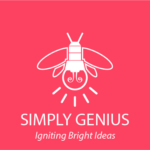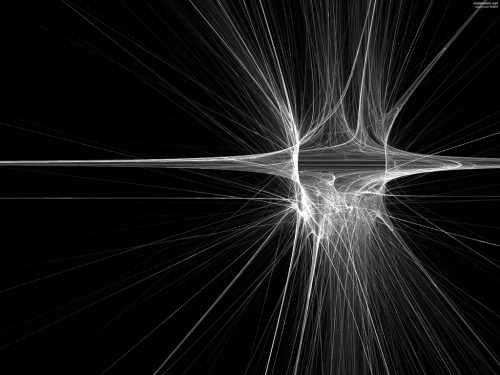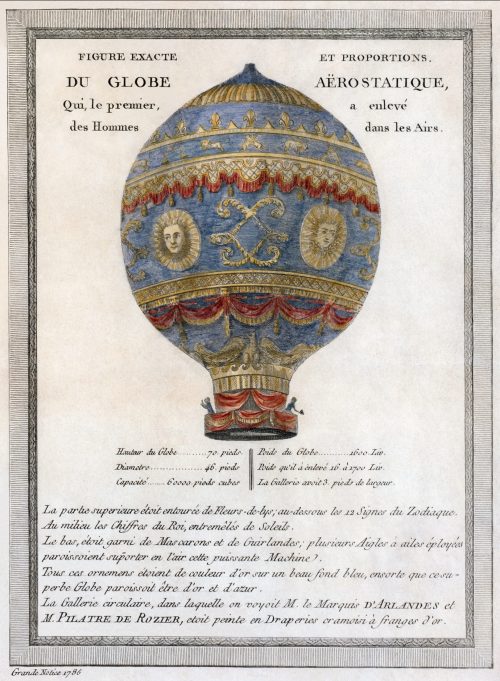
con·nec·tion
noun
noun: connection; plural noun: connections; noun: connexion; plural noun: connexions
- a relationship in which a person, thing, or idea is linked or associated with something else.
- building a relationship between two ideas.
Disruptors are masters at finding the most unlikely or unusual connection between two things in order to create something new.
Connection allows us to see how any two things, subjects, or ideas connect. Sometimes this is triggered by something someone has said. Sometimes it’s your subconscious finding a correlation between two random thoughts or observations. And sometimes it’s through experimentation. How did chicken and chocolate become Chicken Molé? Why did Jack Parsons of Caltech think to use asphalt to create his rocket fuel for jet-assisted takeoffs?
Some of the more obvious examples are:
- Velcro – Swiss engineer George de Mestral discovered the unlikeliest of opportunities when he pulled at the thread of figuring out what made a burr (a byproduct from weeds) stick to everything (including his dog) and so hard to remove. He used this idea to create Velcro way back in 1941.

- The Incubator – Parisian physician Etienne Stephane Tarnier was puzzled by the alarming number of babies who died from premature birth. In 1878, after visiting a zoo in Paris, he noticed an incubator for poultry and applied the same principle to decreasing the mortality rate in infants by over 50 percent.
- The Assembly Line – To maximize output and keep production costs low, Henry Ford was looking for a way to streamline the production of his automobile. Borrowing from a concept he saw by Philip Danforth Armour, who created a moving assembly line for the meat-packing industry, Ford found a way to deliver his cars ahead of schedule while keeping the price of labor and assembly costs low.
Some of the more contemporary examples are:
- Google – Google is an advanced method of gathering logical results of information a user searches for on the Internet. The results are generated based on the way the user inputs his query or question. The findings are everything remotely connected to the search term or phrase used.

- Wikipedia – Launched in 2001, Wikipedia is a multilingual free online encyclopedia written and maintained by a community of volunteers through open collaboration and a wiki-based editing system. It connects the user to relevant information based upon a query. Its editors are known as Wikipedians. Wikipedia is the largest and most-read reference work in history.
- DBpedia – Turns out there’s actually a computer-friendly version of Wikipedia, called DBpedia. Since computers don’t understand English (yet), they need DBpedia to make sense out of Wikipedia’s articles. DBpedia is a crowd-sourced community effort to extract structured content from the information created in various Wikimedia projects. This structured information resembles an open knowledge graph (OKG) which is available to everyone on the Web. A knowledge graph is a special kind of database that stores knowledge in a machine-readable form and provides a means for information to be collected, organized, shared, searched, and utilized, similar to how Google approaches a search query.
The Connection Between Humans and Earth
Indigenous Indian tribes believed they were connected to the planet and that mother nature provided everything they needed in order to live and survive. Part of that awareness was to make sure they didn’t abuse or overuse the resources needed. They were conscious that they played a part in the connection between the earth and their tribes, and they honored and respected that connection by expressing this acknowledgment through prayer, song, replanting, spiritual practices, and by leaving a very small footprint.

And here are some bizarre connections for you to ponder…
Is Being a Thief Actually a Good Thing?
in 2009, a study done by Eric Schwitzgebel, and published in Philosophical Psychology (Vol. 22, No. 6, December 2009, 711–725) showed that relatively obscure, contemporary ethics books of the sort likely to be borrowed mainly by professors and advanced students of philosophy were actually about 50% more likely to be missing than non-ethics books.
Curvy Figures Equals Big Brain
Actress Christina Hendricks has become a modern icon of full-figured beauty since coming on the scene as Joan Harris, the voluptuous secretary-turned-business partner on TV’s “Mad Men.” And her character’s rise in the business world might have had some help from genes. Research shows that curvy women are more intelligent than their thinner sisters.
In a 2007 study of 16,000 women and girls, researchers at the Universities of Pittsburgh and California found that women whose waists were roughly 70 percent of the diameter of their hips outscored women with higher waist-to-hip (WHR) ratios on cognitive tests. The study’s authors claim that this strange phenomenon may be caused by higher levels of Omega-3 fatty acids, which are typically stored around the hips and also contribute to brain growth.
Experts point out that the difference in cognitive abilities between the two groups is very small: 3.6 to 7 percent. And of course, many women’s WHR ratios change as they get older without any decrease in intelligence.
Longer Fingers, Higher SAT Scores?
Maybe intellectual salvation actually lies in your hands. According to a 2007 study published in the British Journal of Psychology, there’s a link between the ratio of the length of a person’s index to ring finger and their performance on the SAT exam. The study found that boys with higher ring-to-index finger ratios tended to perform better on the test’s math section than their peers, while girls with a lower ratio generally had better verbal scores.
The correlation tracks back to hormone exposure in the womb. Higher levels of testosterone lead to both a longer ring finger compared to the index finger and higher math skills. Higher levels of estrogen mean a shorter ring finger compared to the index finger as well as higher verbal ability. A related study showed that male academics in science tended to have very little difference in digital ratio, which meant they had almost equal levels of testosterone and estrogen — thus possessing both verbal and numeracy skills.
There’s a phenomenon called Quantum entanglement. Entanglement really does connect things in different places… for a very specific definition of “connect.” And there’s a real (but complicated) sense in which these connections end up connecting everything. These sorts of “connections” in some sense give rise to space and time.

Imagine someone takes a coin and cuts it along the rim into two halves, a heads half and a tails half. They put the two halves in two envelopes, and randomly give you one. You don’t know whether you have heads or tails…but you know that if you open your envelope and it shows heads, the other envelope must have tails.

Entanglement starts out with connections like that. Instead of a coin, take a particle that isn’t spinning and “split” it into two particles spinning in different directions. One “spins up,” and the other “spins down”. Like the example of the coin, the two particles are “connected” – if one of them is “spin up” the other is “spin down”.
What makes a quantum coin different from a classical coin is that there’s no way to figure out the result in advance. But we know that both halves are somehow connected.
This is more than Apophenia – the tendency to perceive meaningful connections between unrelated things.
Steve Jobs once said, “Creativity is just connecting things. You have to trust that the dots will somehow connect in your future. You have to trust in something — your gut, destiny, life, karma, whatever. This approach has never let me down, and it has made all the difference in my life.”
“Creative people,” says Nancy C. Andreasen, Chair of Psychiatry at the University of Iowa, “are better at recognizing relationships, making associations and connections, and seeing things in an original way–seeing things that others cannot see.”
Andreasen has been studying the link between creativity and connection-making since the 1960s, and her most recent work gives us a glimpse of the neuroscience behind the creative mind. Using PET scans, Andreasen and her team ask subjects to do two different things: 1) recall a specific event that had occurred in the past and describe it with their eyes closed, and 2) relax, lie quietly with their eyes closed, and think about whatever came to mind. Andreasen and her colleagues guessed that the association regions of the brain would be most active during the second task when participants would essentially be engaged in “free association.”
Sometimes connecting is like putting a puzzle together. Sometimes it’s paring unlikely or unusual things. And sometimes it’s seeing something useful in another modality, industry, or service, whose same concept can be used for something completely different, like the meat packing assembly line concept used for automobile assembly. And then there are those times when one ‘MacGyver’s’ two things to make something work, like using a paperclip to repair eyeglasses, or using a folded napkin to keep a table from wobbling, or petroleum to fix a squeaky door hinge (WD-40).
Finding the Optimal Pathway to Connection
To give you some powerful tools for connecting unlikely things, I’m going to borrow from Saga Briggs’ article on How to Make Connections Like a Creative Genius, and give it a little twist:
1: Think Like a Comic Book Writer
Comic book writers, Copywriters, and Art Directors all seem to have a unique approach when tackling a story or ad concept. In order to do this, the more creative ones tend to work in unusual environments, as exampled by one of the more prominent creative companies, IDEO. They have airplanes and bicycles suspended from the ceiling, plastic beaded curtains used as doors, and Christmas tree lights on display all year round. Everywhere you go are toys, gadgets, and prototypes from past projects all there to shift your mindset, spark your creative process, and get you out of your boring, logical, problem-solving frame of mind, and into a more highly divergent mindset.
2: Ignoring the Problem
You know how to find your missing glasses or car keys, right? Simply ignore the fact that they are lost. This is especially challenging when you are rushing out the door to work, but we know, from experience, that when our rational mind steps away from the issue at hand, that’s when the subconscious takes over and figures things out. Distraction can do wonders for the creative mind. Vacuuming, watching television (but not too much), going for a walk, talking to a friend about other interests, taking a long bath, or even falling asleep can all get the creative juices flowing. Not to overuse a creative genius, but Steve Jobs did his best thinking when going for long walks in his neighborhood.
3: Seek Out New Experiences
As I’ve said many times, one of the best methods for getting your genius creativity working at maximum capacity is to try something new. Visit a new town, state, or country. Try a new (or even uncomfortable experience). Talk to strangers. Start asking more questions than your (normally) rational mind would ask. We’re conditioned not to ask too many questions as a rule, as we don’t want to appear stupid or foolish. So instead, we either look it up or simply don’t ask. It’s such a silly ego-inflated, unspoken rule that many adults choose to keep their mouths shut. By asking more questions, and experiencing a variety of new things, you open your mind to access and cultivate that lesser-used divergent mindset of yours that always wants to come out and play.
4: Don’t Look to the Mountains for What’s Right at Your Feet
Innovation is principally about improving on an existing concept. However, what the McDonald brothers did, was to borrow from another concept to create something brand new. After World War II, drive-in competition in San Bernardino grew, and the McDonald brothers discovered something surprising about their barbecue restaurant: 80 percent of their sales came from hamburgers. “The more we hammered away at the barbecue business (a $145,000 annual income), the more hamburgers we sold,” said Richard McDonald. They realized that focusing the bulk of their labor and effort on barbecue wasn’t where the profit was. So, taking a cue from Henry Ford’s assembly-line production of automobiles, the McDonald brothers developed the “Speedee Service System” and mechanized the kitchen of their roadside burger shack. They focused on what was most in demand and profitable. Each of its 12-person crew specialized in specific tasks, and much of the food was preassembled. This allowed McDonald’s to prepare its food quickly—and even ahead of the time—when an order was placed. All hamburgers were consistently served with ketchup, mustard, onions and two pickles, and any customers who wanted food prepared their way would have to wait. The new business concept began to take off especially with families and businessmen drawn by the cheap, 15-cent hamburgers, the fast service, and a low-cost menu. With labor costs greatly slashed and revenue growing to $350,000 a year by the early 1950s, the McDonald brothers saw their profits double.

When we live in a world of logic, we train ourselves to only seek conclusions. In this way, we limit our potential and opportunity. In some areas of science, learning to connect unlikely dots encourages one to reframe things in a new way. For example, JPL (Jet Propulsion Laboratory) is working on a thirty-year project of sending a kite into deep space in order to block the light of closer stars so we may better observe stars farther away. To accomplish this, they have to see around logic. How would the kite unfold itself? How could it move around in space? If there’s a tear, caused by a space particle, how could it repair itself? The success of this project relies on unconventional thinking to connect the most unlikely dots. This same connective thinking went into improving the successful landings of the Mars rovers.
Connecting unique things and ideas doesn’t have to rely on logic. Sometimes these connections are not linear, nor are they direct. In this way, connection takes the concept of man trying to fly, as they did in the early 1700s, and puts an unlikely spin on the concept of flight. The first manned flight was on November 21, 1783, the passengers were Jean-Francois Pilatre de Rozier and Francois Laurent. These gentlemen were inventors of the first hot air balloon. They found an unconventional way, other than replicating the wings of birds, to successfully fly.

When we forgo logic, reasoning, and problem-solving, what is left? Well, this is where divergent thinking, fantasy, and inventive discovery come out to play. When you are willing to be silly, playful, imaginative, and even childlike in your ideas and observations, when you are willing and able to risk more, become more daring, and take the grander chance of being foolish, this is where the real creative juices flourish.
Footnote:
Philosophical Psychology (Vol. 22, No. 6, December 2009, 711–725), Schwitzgebel, Eric, [subscription number 917696698], Publisher Routledge Informa Ltd Registered in England and Wales Registered Number: 1072954 Registered office: Mortimer House, 37-41 Mortimer Street, London W1T 3JH, UK (https://www.tandfonline.com/doi/abs/10.1080/09515080903409952)
Curvy women may be a clever bet, BBC News, Monday, 12 November 2007 (http://news.bbc.co.uk/2/hi/7090300.stm)
Are Curvy Women More Intelligent?, Childs, Dan, ABC News, Nov. 13, 2007, (https://abcnews.go.com/Health/story?id=3859175)
Finger Length Predicts SAT Performance, Live Science, published May 22, 2007 (https://www.livescience.com/7290-finger-length-predicts-sat-performance.html)
Finger points to good research skills, Polly Curtis, education correspondent, The Guardian, Wed 20 Oct 2004, (https://www.theguardian.com/education/2004/oct/20/science.highereducation)
The Way You Think Everything Is Connected Isn’t the Way Everything Is Connected, 4 gravitations, June 30, 2017, (https://4gravitons.com/2017/06/30/the-way-you-think-everything-is-connected-isnt-the-way-everything-is-connected/)
Wikipedia contributors, “Apophenia,” Wikipedia, The Free Encyclopedia, https://en.wikipedia.org/w/index.php?title=Apophenia&oldid=1106154203 (accessed September 18, 2022).
How to Make Connections Like a Creative Genius, Saga Briggs, InformED, November 1, 2015, (https://www.opencolleges.edu.au/informed/features/the-value-of-connecting-the-dots-to-create-real-learning/)